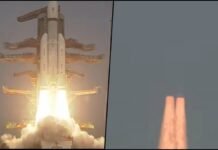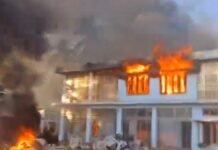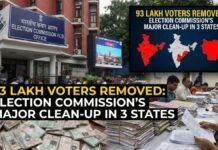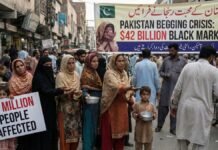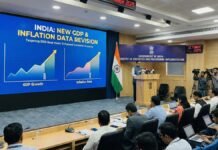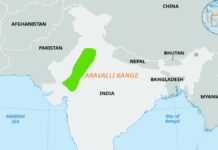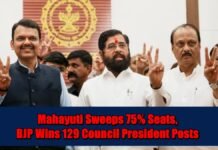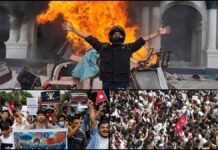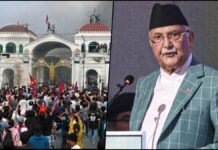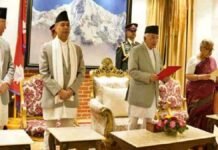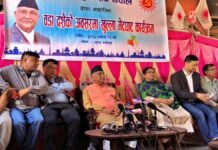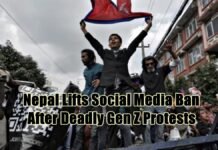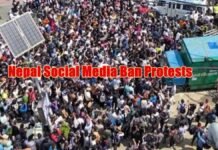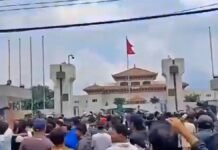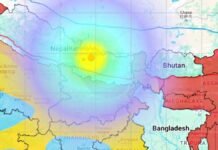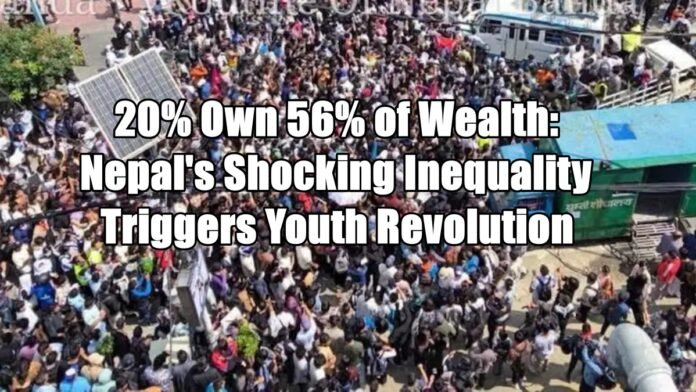
Key Points:
- Gen-Z led protests against social media ban escalate into full-scale anti-corruption movement demanding systemic change
- Three Prime Ministers in 5 years: Political instability fuels unemployment crisis and economic inequality
- Wealth concentration crisis: Top 20% control 56% of national wealth while 80% share remaining 44%
- Post-1990 privatization policies failed spectacularly, pushing Nepal toward failed state status
- Income disparity exploded from 10x to 14x gap between richest and poorest by 2010-11
New Delhi: Nepal is witnessing its most significant political upheaval in decades as youth-driven protests against government corruption have evolved from initial opposition to social media restrictions into what observers are calling a historic coup attempt. The Gen-Z led movement has captured national attention by challenging the entrenched political establishment that has overseen years of economic decline and rampant nepotism.
The protests began as digital dissent against social media bans but quickly transformed into a broader anti-corruption crusade when videos of politicians’ children flaunting luxury lifestyles went viral, contrasting sharply with widespread unemployment and poverty affecting ordinary Nepali youth.
Political Instability Deepens Economic Crisis
Nepal’s political landscape has been marked by unprecedented instability, with three different Prime Ministers taking office within just five years. This revolving door of leadership has created a governance vacuum that has severely impacted the country’s economic recovery and development prospects.
Recent Leadership Changes:
- July 2021: Sher Bahadur Deuba assumed office amid political uncertainty
- December 2022: Pushpam Dahal ‘Prachanda’ became PM following general elections
- July 2024: KP Sharma Oli returned to power as the current Prime Minister
Each transition has brought promises of stability and economic growth, but the reality on the ground tells a different story. Young Nepalis, who initially welcomed the federal system hoping for better governance, jobs, and economic opportunities, now face rising unemployment, inflation, and diminishing prospects for upward mobility.
Corruption and Nepotism Fuel Public Anger
The trigger for the current unrest came from social media content showing the lavish lifestyles of political elites’ families. Images and videos of expensive foreign trips, branded luxury goods, and extravagant parties organized by politicians’ children became symbols of systemic corruption and inequality.
This stark contrast with the daily struggles of ordinary citizens has galvanized public opinion, particularly among educated youth who see their career prospects diminishing while political connections determine access to opportunities and resources.
Economic Inequality Reaches Breaking Point
Nepal’s economic data reveals a deeply troubling picture of wealth concentration that has worsened significantly over the past three decades. The country’s wealth distribution has become increasingly skewed, creating a two-tiered society where a small elite controls the majority of national resources.
Current Wealth Distribution Crisis:
- Top 20% of population controls 56% of national wealth
- Bottom 80% shares only 44% of total property and assets
- Economic gap widened dramatically from 1995-96 to 2010-11
- Richest segment’s wealth grew from 10x to 14x that of the poorest
Failed Economic Policies Since 1990
The root causes of Nepal’s current crisis trace back to the economic liberalization policies implemented after 1990. The shift toward laissez-faire economics and aggressive privatization has created more problems than solutions for the Himalayan nation.
Privatization Failures:
The government’s decision to transfer ownership of numerous state enterprises to private hands was based on the assumption that private sector efficiency would drive development. However, this strategy backfired spectacularly due to several critical factors:
- Political instability created an unfavorable investment climate
- Private investors prioritized short-term profits over long-term development
- Essential services and infrastructure suffered under profit-driven management
- Job creation failed to materialize as promised
Dramatic Wealth Gap Expansion
Recent economic surveys paint a disturbing picture of how inequality has accelerated in Nepal. The Nepal Living Standard Survey 2010-11 provides concrete evidence of this growing divide:
Income Growth Disparities (1995-2011):
- Top 10% income growth: 512% annually
- Bottom 10% income growth: 375% annually
- Overall gap increase: From 10x to 14x difference
- Trend continues to favor wealthy elite
This data demonstrates that economic reforms, rather than creating broad-based prosperity, have primarily benefited those who were already wealthy, leaving the majority of Nepalis further behind.
Youth Demands for Systemic Change
The current protest movement represents more than just anti-corruption sentiment; it embodies a fundamental challenge to Nepal’s political and economic system. Young protesters are demanding:
- Transparent Governance: End to nepotism and favoritism in government appointments
- Economic Justice: Redistribution of wealth and opportunities
- Job Creation: Concrete policies to address youth unemployment
- Anti-Corruption Measures: Prosecution of corrupt officials and recovery of stolen assets
Regional and International Implications
Nepal’s internal crisis has broader implications for regional stability, given its strategic location between China and India. Both neighboring powers are closely monitoring developments, as political instability in Nepal could affect their regional interests and investments.
The youth-led movement’s success or failure will likely influence similar movements across South Asia, where corruption and inequality remain persistent challenges to democratic governance.
Path Forward Uncertain
As protests continue to intensify, Nepal faces a critical juncture. The government’s response to youth demands will determine whether the country can achieve meaningful reform or face continued political turbulence. The international community is watching closely as this small Himalayan nation struggles to balance democratic aspirations with the harsh realities of economic inequality and systemic corruption.
The outcome of this movement could serve as a template for youth-driven political change across the developing world, where similar issues of corruption, inequality, and limited opportunities persist.

